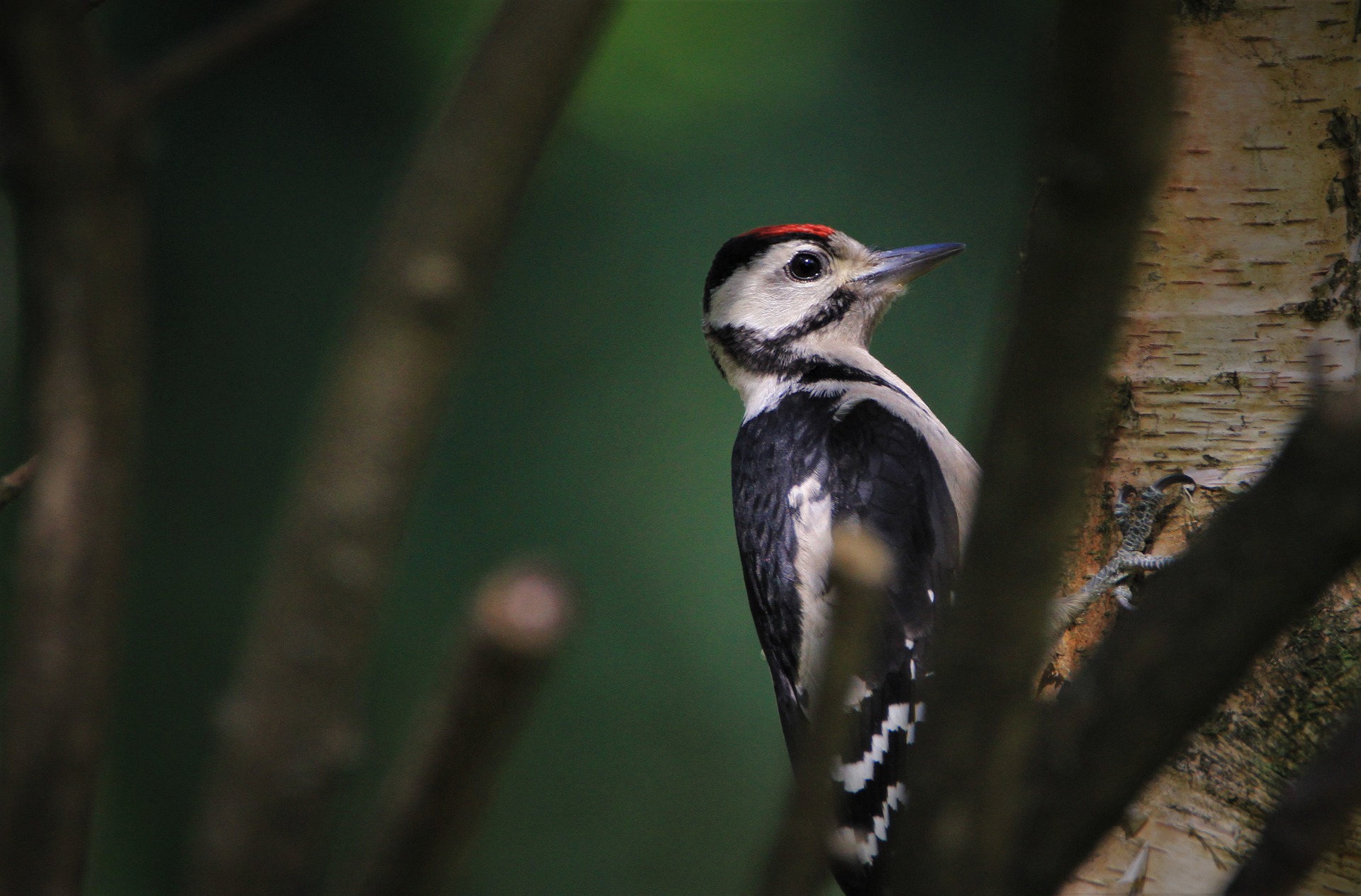If I slammed my mouth against a tree over and over again, I would definitely sustain some serious, lifelong injuries. And I’m sure every other human could attest to this. So then how do woodpeckers slam their beaks into a tree 20 times per second and up to 12,000 times in a day?
Woodpeckers are found all around the world, with the exception of Australia and Antarctica. They use their beaks to drill holes into trees to extract sap and bugs. Pecking occurs at a tremendous force — about 10 times more than what causes concussions in humans.
Woodpeckers have a bony structure called the hyoid. It supports the tongue, starting in the mouth, wrapping around the head, and attaching between the eyes. It can be thought of as a seatbelt around the brain. It absorbs some of the force that occurs during the collision of the beak into the tree.
Additionally, the bones in the skull have an accumulation of minerals that make it stiffer and stronger, especially compared to other birds’ skulls. The skull also is thinner and has less fluid, which limits the amount that move during the motion of the collision. You can think of it as shaking a normal egg versus a hard-boiled egg. The hard-boiled egg’s insides move less than a normal egg’s. This means that the skull is especially tough.
Newton’s second law of motion tells us that force equals mass times acceleration. The amount of pain you feel also depends on how much area that force is applied on.
For example, if you step on a single nail, it’s going to hurt because all that force was concentrated in a very small region. But, if you were to lie on a bed of nails, it would barely feel like anything because the force is spread out over a large surface. Thus, the area surrounding a woodpecker’s brain is large and so if the brain does move against the skull, there is a lot less damage than, say, when a human’s brain knocks into the skull (which is a concussion).
And the fact that a woodpecker’s brain is small and packed together tightly means it doesn’t slosh around as much as ours does.
The g force, also called the gravitational force, is a measurement of relative acceleration. On Earth, we usually feel 1 g. Roller coasters let us feel up to 5 g. On the other hand, race car drivers have felt up to 200 g, which was only survivable because it occurred for a few milliseconds.
The action of pecking takes from 0.5 ms to 1 ms from full speed to completely stopping (23 feet per second to 0 feet per second). During this time, humans can only take up to 300 g before we get a concussion. But woodpeckers can survive more than 4,000 g. As the volume and mass of a brain drop in a cubic manner, its surface area decreases in a square manner. This means that a woodpecker’s brain has a much smaller skull area to absorb the force of the collision and is much lighter than our brains, which is why it is able to collide with trees at such a high force.
Woodpeckers also have a third eyelid that stops the eyeball from popping out when they peck wood. Mainly, woodpeckers have evolved into having the ability to survive collisions while humans haven’t. So, with contact sports like football and hockey, we will likely get concussions unless we can develop a really good helmet that acts like a woodpecker’s skull.
VAAGEESHA DAS is a senior at Morgantown High School.
Information comes from:
- Mattonen, S. (2019, July 23). Do woodpeckers get concussions? Let’s Talk Science. Retrieved September 29, 2021, from https://letstalkscience.ca/educational-resources/stem-in-context/do-woodpeckers-get-concussions;
- McKittrick, J., & Jung, J.-Y. (2021, June 3). How do woodpeckers avoid brain injury? The Conversation. Retrieved September 30, 2021, from https://theconversation.com/how-do-woodpeckers-avoid-brain-injury-120489.
TWEET @DominionPostWV




